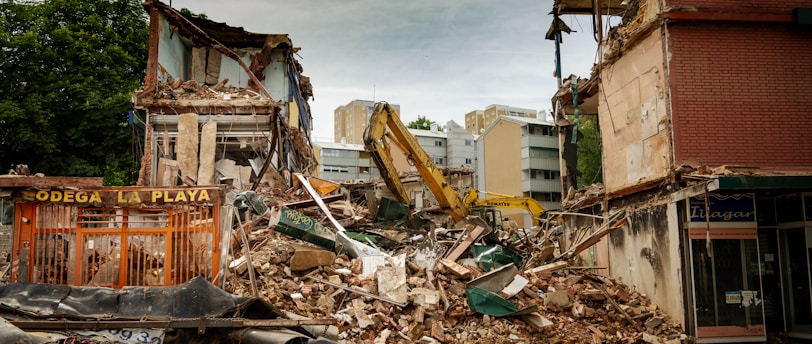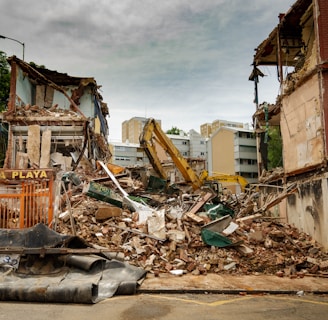A Tremor Through Time: Revisiting Japan's Mightiest Earthquakes
Explore Japan's seismic tapestry through history in 'A Tremor Through Time.' Uncover the nation's resilience amidst the mightiest earthquakes in this riveting journey.
MISC.


Introduction
1. Overview of Japan’s Geographical Location and Seismic Activity
Spanning the tropical Pacific Ocean, Japan comprises 6,852 islands, a stunning yet intricate archipelago. Nestled within the Ring of Fire, Japan experiences over 1,500 earthquakes annually. Picture living next to a neighbor with a penchant for drumming; that's Japan, with tectonic plates constantly setting their rhythms.
2. The Impact of Powerful Earthquakes on Japan's History
Let's infuse history into the mix. Earthquakes, with their ferocity, have punctuated Japan's timeline, shaping its society, history, and ethos. From the Hakuho period when seismic events had a different resonance to recent upheavals, each quake has etched an indelible mark.
3. Purpose and Scope of the Article
This journey down memory lane aims to illuminate how these colossal geological tantrums have jolted Japan across history, and how this exquisite island nation has learned to dance to their beats.
II. Historical Insights: Japan’s Earliest Documented Earthquakes
1. The 684 Hakuho Earthquake: Establishing Japan's Seismic History
Hop into my time machine; let's journey to 684 AD. The Hakuho Earthquake, Japan's earliest documented seismic event, wasn't a mere tremor. It resembled juggling red-hot coals, claiming a third of Dazaifu's population, the ancient governmental hub. Nature had a grand entrance in mind.
2. Disastrous Edo Period: The 1854 Ansei Nankai Earthquakes
Shift to the Edo period in 1854. It wasn't a single earthquake but a dreadful series—the Ansei Nankai Earthquakes. They marked a calamitous period in Japanese history, with three notable quakes causing significant loss of life and societal changes.
3. The 1891 Nobi Earthquake: Insights from Pre-Modern Seismology
Despite its massive destruction, the 1891 Nobi Earthquake sparked interest in seismology, akin to a frightening muse inspiring a profound scientific pursuit. This tragedy propelled Japan's earnest endeavors to comprehend earthquakes, akin to a moody teenager understanding angst.
III. The Ground Breaks: Major Earthquakes of the 20th Century
1. The Great Kanto Earthquake: Tokyo in Flames, 1923
In the 20th century, 1923 witnessed the infamous Great Kanto Earthquake grappling with Tokyo and neighboring regions. The brutal quake, followed by fires, devastated a significant part of the city, transforming it into an ashen, dystopian landscape.
2. Showa-era Seismic Disasters: The 1946 Nankai and 1948 Fukui Earthquakes
Earth's plates seemed to favor Jazz. Amidst the post-war Showa era, the 1946 Nankai and 1948 Fukui earthquakes echoed destructive beats, devastating large areas and leaving tales of endurance and reconstruction.
3. The 1995 Great Hanshin Earthquake: Kobe's Resilience
Jump to the 90s—a time for boy bands and Tamagotchis—yet 1995 brought the mighty Great Hanshin Earthquake, hammering Kobe. The city showcased inspiring resilience, rising from rubble to bravely rebuild.
IV. Shaking of the New Millennium: Earthquakes in the 21st Century
1. The Fatal 2004 Chuetsu Earthquake: Tragedy Strikes Niigata
In the early 2000s, amidst Y2K panic and ska-punk, the tumultuous tremors persisted. In 2004, the deadly Chuetsu Earthquake made its untimely debut, besieging Niigata with lethal landslides and infrastructure damages resembling a relentless blockbuster's third act.
2. The Cataclysmic 2011 Great East Japan Earthquake and Tsunami
The 2011 Great East Japan Earthquake was apocalyptic—a visitor who barged in unannounced. The earthquake, coupled with a tsunami, wreaked havoc, folding structures like hastily discarded origami and sweeping away entire towns mercilessly.
3. The 2016 Kumamoto Earthquakes: Disturbance in Kyushu
In 2016, Kumamoto witnessed a catastrophic series of killer quakes, causing severe devastation and demolishing historical landmarks. It's as if a cosmic Kurt Cobain strummed his ‘lithium’-fueled grunge power chords on the Earth's crust.
V. Building Resilience: Japan's Approach to Earthquake Preparedness and Response
1. Implementation of Early Warning Systems
Japan, the metaphorical custodian of earthquakes, has been an early bird—especially with early warning systems. Their systems, as precise as Swiss watches, provide real-time seismic data faster than you can read this sentence.
2. Engineering Innovations for Earthquake-Resistant Structures
Thinking about building resilience? Think Japanese. From towering skyscrapers to traditional houses, Japan's engineering marvels infuse resilience into their architectural fabric quicker than a cat on a Roomba.
3. National Initiatives for Community Awareness and Disaster Preparedness
The nation mobilized initiatives, weaving communities with threads of awareness and preparedness. They've transformed schooling into a seismic crusade, incorporating earthquake drills into the curriculum, ensuring everyone knows the ‘do’s and ‘don’ts as swiftly as their ABCs.
VI. Conclusion: From Tragedy to Triumph - Japan’s Ongoing Journey with Seismic Disasters
1. Lessons Learned from the Past
Each tremor has propelled significant progress in studying and managing earthquakes. Each quake acted as a stern teacher, guiding lessons in earthquake preparedness and resilience.
2. Japan’s Evolving Approach to Earthquake Mitigation
Through recurrent trials by shaking, Japan continually evolves its approach to earthquake mitigation, leaping over seismic challenges like a gazelle over a hedge.
3. A Hopeful Look Towards the Future
Despite ongoing tremors disrupting Japanese life, optimism shines brighter than a Saturday morning cartoon. Japan marches towards a safer, resilient future.
VII. FAQs
1. What are the most powerful earthquakes recorded in Japan's history?
The 2011 Great East Japan Earthquake claims the 'earthshattering' crown. However, don't overlook the devastating trio from the Ansei Nankai series, along with the tragic Kobe, Nobi, and Kanto earthquakes, equally catastrophic in their impact.
2. What makes Japan prone to frequent seismic activities?
Welcome to earthquake central—Japan. Nestled within the Pacific Ring of Fire, where tectonic plates love to tango, Japan becomes a bustling dance floor for seismic events.
3. How is Japan adapting to the risk of future seismic events?
Japan adapts to seismic risks faster than flipping a pancake. Mastering the art with early detection systems, resilient architecture, and educational initiatives, they foster a culture of readiness.
4. How has seismic activity shaped Japan's societal and historical landscape?
Seismic events have chiseled Japan's societal and historical landscape, sculpting their heritage, societal norms, and development strategies. Each tremor, each rumble, etched into Japan's resilient psyche, shaping a nation unfazed by nature's trials.
There you have it—a journey through time revisiting Japan's mightiest earthquakes. Quite a ride, wasn't it? Buckle up; the Earth never stops shaking, and Japan keeps conquering these seismic hurdles.


